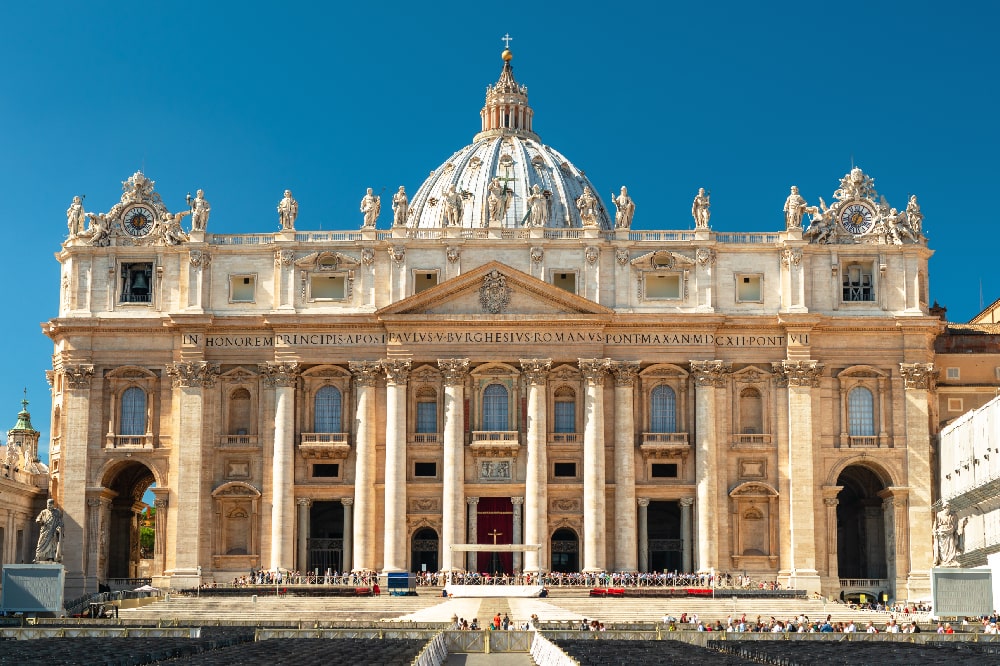The story of San Gennaro is set during the terrible persecution of Diocletian, but immediately covered with legend
Contents
There are many mysteries related to the cult and history of San Gennaro, patron saint of Naples. Since its birth: although many historical documents attest to the 21 April 272 AD, none of them reveals the exact location. Two cities are contending for the origins of the Saint: Naples, the place of his martyrdom (San Gennaro was beheaded in Pozzuoli in 305 AD) and theatre of the miracle of relics, and Benevento, of which the Saint was bishop. The inhabitants of Naples also attribute to his intervention the arrest of the eruption of Vesuvius in 1631.
Beyond which city can really claim this origin illustrious, the cult for San Gennaro developed from the beginning right in Campania, the region where he lived and moved his steps as a man and above all as a religious. He died young, San Gennaro, but this did not prevent him from being liked by everyone, to the point of earning respect and consideration not only of Christians, but also of the pagans who met him. The love and respect of all derived from dedication to others, which were manifested in works of charity addressed to everyone without distinction. This made him very close to the people, who saw in him a point of reference and a kind of guardian and protector.

His name, Gennaro, was already widespread in Campania and southern Italy, and it is still so today, especially thanks to the cult of which the Saint is the protagonist. It comes from the Latin Ianuarius and is linked to the cult of Janus (Ianus), the two-faced deity of the Roman-Italic culture, guardian of the keys of heaven, bound to the first month of the year and protector of beginnings and passages.
History of San Gennaro
The history of San Gennaro takes place during the reign of Diocletian, a Roman emperor who initially demonstrated a certain openness towards Christians, granting them freedom of worship and also to occupy prestigious positions, but who subsequently unleashed they suffered one of the most terrible persecutions in history. In particular, the emperor took care to deprive members of the Church of the goods that they used to help the poor and needy, thus trying to undermine the love that the people had for them.

Like many, Gennaro was a martyr under Diocletian. As Bishop of Benevento he had visited his friend, the deacon Sosso (or Sossio), guide of the Christians of Miseno. When the latter was imprisoned by order of the judge Dragonio, proconsul of Campania, Gennaro, who was in Pozzuoli, wanted to visit him in prison, accompanied by friends deacon Phaistos and reader Desire, to offer his support and prayer. Dragonio also had them arrested, and later also the deacon of Pozzuoli, Procolo, and two faithful Christians, Eutiche and Acuzio. Condemned to be eaten by bears in the amphitheatre, they were instead beheaded on 19 September 305 AD, at the Solfatara di Pozzuoli. Dragonio had in fact sensed that a public execution would unleash unrest among the people, who showed open sympathy for the prisoners. Just after the execution a woman named Eusebia collected in two teardrops, small ampoules, and some of the blood of the bishop and hid it. This blood will become the protagonist of the most famous miracle of San Gennaro. All the bodies were buried at the Solfatara and only a hundred years later, in 431 A.D., the relics of San Gennaro were moved from Pozzuoli to the catacombs of Capodimonte in Naples, which from then on will be called Catacombs of San Gennaro.
The relics of the saint at the Cathedral of Naples
The cult of San Gennaro in Naples spread so quickly that it was necessary to enlarge the catacombs, to welcome all the faithful who went there to show their devotion. And this despite his canonization would only take place in 1586! The number of visits increased even more when great wonders began to be attributed to the Saint, such as his intercession in the violent eruption of Vesuvius in 472 AD, after which it became a common custom for the Neapolitans to call him for earthquakes and eruptions until he was elevated to the rank of patron of the city. It was as a sign of gratitude to San Gennaro after another eruption in 512 A.D. that the bishop of Naples, Santo Stefano I, had erected next to the basilica of Santa Restituta the church Stefania, which would later become the Duomo. Here he had the skull and the blood-filled vials of San Gennaro stored, preserving them from the raid of the Lombard king Sicone, who in 831 A.D. stole the other remains of the Saint from the catacombs and brought them to Benevento.
Today, the miracle known all over the world still takes place in the Cathedral of San Gennaro: three times a year, during a solemn ceremony attended by thousands of faithful, The blood of San Gennaro is thickened again.

The blood of San Gennaro: how and when the miracle happens
Three times a year the blood of Saint Gennaro, martyr and patron of Naples, is miraculously melted…
The treasure of San Gennaro
Next to the Cathedral of Naples and the Chapel of the Treasury, there is the entrance to the Treasure Museum of San Gennaro. Here are gathered the many precious gifts that popes, kings, emperors, nobles, but also common people, have offered the Holy One throughout the centuries as a sign of gratitude for his protection and intercession. Since 1527 this treasure has been protected by the Deputation of the royal chapel of the Treasury of San Gennaro, a secular institution. Among the other precious objects and masterpieces of art kept in the museum, there are the mitre of San Gennaro, decorated with 3964 precious stones, the necklace of San Gennaro, to which have been added over the centuries precious stones and jewellery, and the insignia of the Order of San Gennaro, but also a collection of silver and paintings of great value.


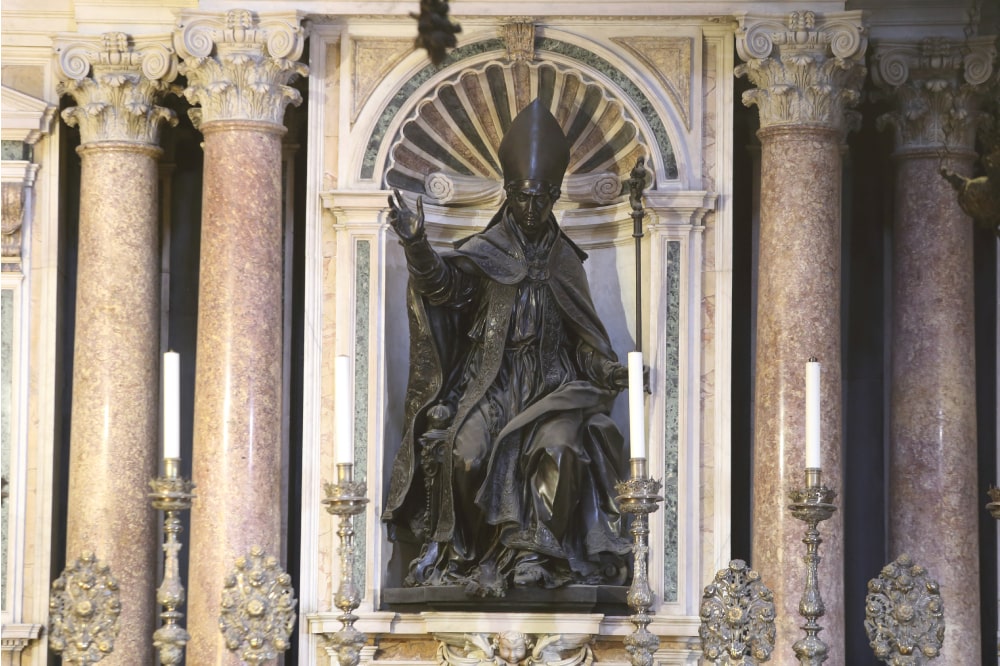
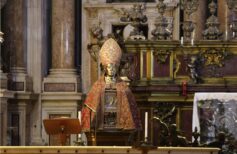

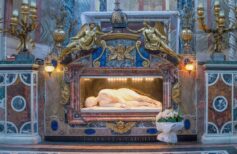
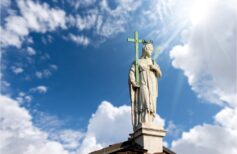
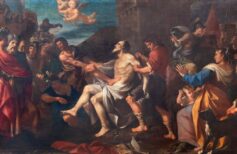

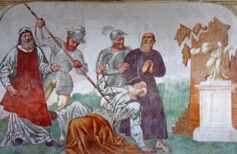
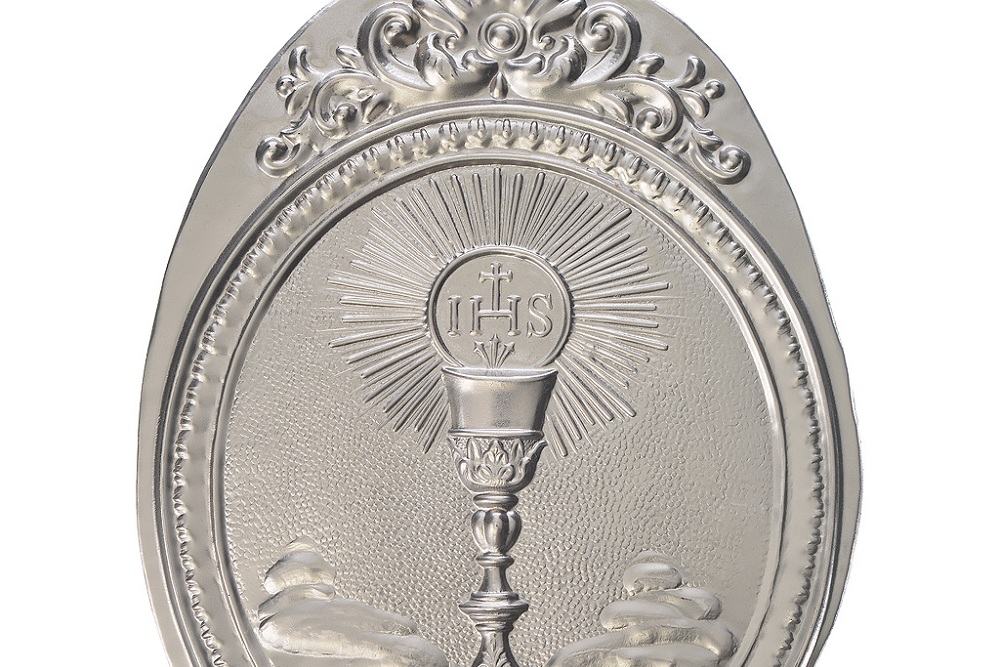
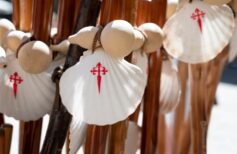








 25 August 2025
25 August 2025

